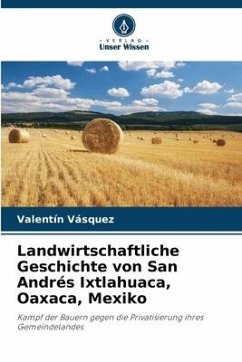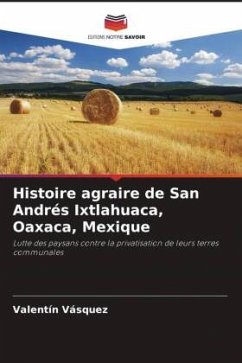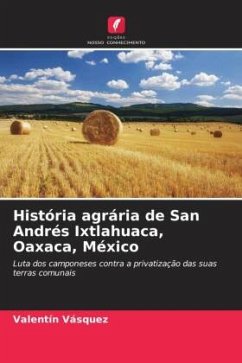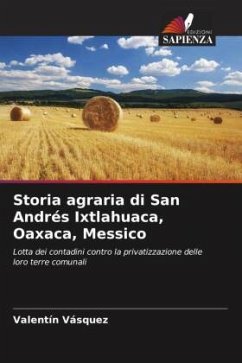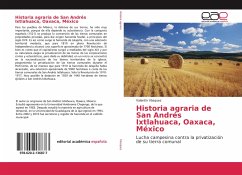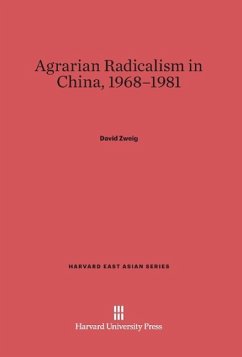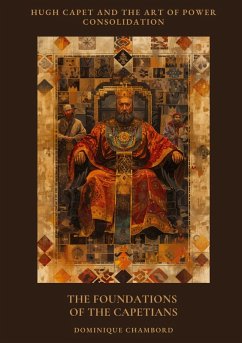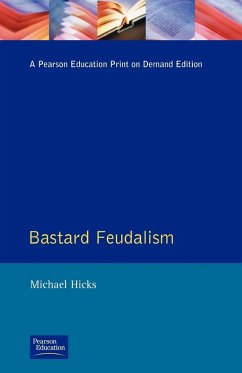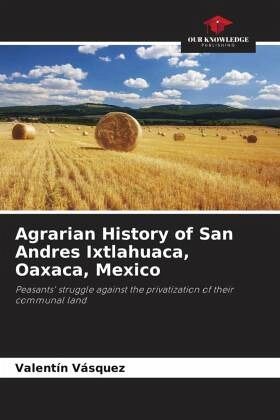
Agrarian History of San Andres Ixtlahuaca, Oaxaca, Mexico
Peasants' struggle against the privatization of their communal land
Versandkostenfrei!
Versandfertig in 6-10 Tagen
36,99 €
inkl. MwSt.

PAYBACK Punkte
18 °P sammeln!
For the peoples of Mexico, the defense of their lands has been very important, because their subsistence depends on it. With the Spanish conquest (1521), communal lands were converted into private properties, giving rise to feudal haciendas at the beginning of the 17th century. This is how the hacienda of Jalapilla arose, with a modest territorial extension, which by 1810 in the midst of the Revolution of Independence reached an approximate area of 1700 hectares. Although it is true that capitalism emerged in the mid-19th century and by its nature demanded the privatization of the lands of civ...
For the peoples of Mexico, the defense of their lands has been very important, because their subsistence depends on it. With the Spanish conquest (1521), communal lands were converted into private properties, giving rise to feudal haciendas at the beginning of the 17th century. This is how the hacienda of Jalapilla arose, with a modest territorial extension, which by 1810 in the midst of the Revolution of Independence reached an approximate area of 1700 hectares. Although it is true that capitalism emerged in the mid-19th century and by its nature demanded the privatization of the lands of civil and ecclesiastical corporations, but given its weakness, at the beginning it concentrated on the nationalization of the territorial goods of the church, postponing the privatization of the communal lands during Porfirism, so that by 1910 the hacienda of Jalapilla had reached an approximate extension of 5000 hectares at the expense of the communal lands of San Andres Ixtlahuaca. Only the Revolution of 1910-1917, made possible the endowment in 1929 of 1440 hectares of ejido lands to San Andrés Ixtlahuaca.



